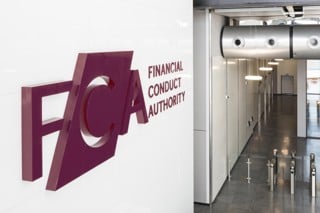BMW Group Financial Services believes it has taken a market leading position in introducing a capped finance rate of 10.9% dealers can sell consumer credit at, while dramatically reducing add-on fees.
But in this in-depth interview its group brands general manager Spencer Halil (pictured) says this is the first step in ensuring the customer comes first (regulator second, dealer third) – and it is now trialling a reduced rate of 8.9%.
AM: When I look at change to the provision of consumer finance, the question it prompts is what are you attempting to do – either solve a problem, or exploit an opportunity? It sounds like the former.
Spencer Halil: Well, it’s a bit of both, really.
We saw the fact that the customer was expecting much more online interaction. The customer was expecting much more simplicity and transparency of proposition. Our customers expected, and didn’t understand why they didn’t get, a uniform offering when they went into any and every BMW centre.
They don’t see dealer groups as different entities. They expect to be treated to a very high standard, and in a very uniform way, which to a large degree they do get. We’re very good at customer management at the point of sale, but they also expect the offer to be very consistent and at a high level, and fair and competitive.
They don’t expect us to be the cheapest. They don’t get that with the cars, so they don’t expect that around financial services products either, but they’re buying into premium, they’re buying into quality.
The problem was we knew the customer expected these things, and we could identify many, many aspects of our business that didn’t deliver to those expectations. It wasn’t damaging our business then, but if we didn’t do something about it, it would.
It’s not an entirely altruistic thing that we’re doing. It’s good business sense, as well.
AM: you haven’t made any reference to the new FCA regime as a guiding force in your decision
SH: Well, we knew clearly we were already subject to regulation, and we knew that the regulator was changing from the FSA/OFT to the FCA. We hadn’t really, at that point, registered that it was going to be a fundamental change as it clearly has been.
A day doesn’t go past without the FCA hitting someone with a fine. They are far more aggressive and proactive, and rightly so.
We’ve never been a company that sees regulation as a negative, but this predates the changes.
We have a hierarchy of priorities within our business. It always was dealer first. The dealer was our customer, and the end user, the driver, was their customer. But we worked with the dealer to make sure that the they delivered a great service to the customer, and in so doing, the customer would receive a good experience. The priority has changed. The customer is our first priority, the regulator second , the dealer is third. It has to be this way.
AM: Why?
SH: We believe, by satisfying all of our responsibilities to the customer, we will satisfy our responsibilities to the regulator, and in satisfying our responsibilities to the customer and the regulator, we will present better opportunities and more sustainable businesses for our dealers.
AM: How does your introduction of a capped interest rate on credit sales impact the dealer at the point of sale? What is a dealer to do differently?
SH: In the past we had 53 different business units in our network, from individually-owned dealerships to the biggest plcs, and we had 53 different packages.
They were the same products - HP or our PCP Select - and there are a number of more sort of corporate-style products, like leasing and contract hire, but they’re the same products, but at different prices, and the price was presented to the dealer, and then the dealer made their commission by presenting a different price to the customer, and the gap between the two was the margin that the dealer earns. That’s the traditional model. That’s how almost every lender in the country operates. We’ve moved to one package across all of our dealers. There’s no way we can present a uniform proposition to the customer regardless of where they visit one of our branches, if we don’t have one offering.
Also rather than having one rate that the dealer operates up from, we have one rate than the dealers now operate down from. So, we set a maximum rate at 10.9 APR, and the dealers can provide either competitive advantage, or offer lower rates if necessary.
They can discount down. That’s not just semantics in our mind – that’s not just being smart.
The current model is, we give a dealer a rate and they don’t tell the customer what the cheapest offer they can make is, and they see how high they can get it to maximise the earnings.
We are going to put our 10.9% rate into our online calculators. We’re going to make sure the buying public knows the most you’ll ever pay with a BMW, when you buy a BMW Financial Services’ product, is 10.9%.
The dealers can then choose to discount below that.
Now, I accept the criticism that 10.9% isn’t the most captivating rate in the marketplace, but at the end of the day, we’ve narrowed the bandwidth. We’ve put a ceiling on it.
It’s much lower than many customers are paying for car loans at the moment, and there’s still ample opportunity for the dealer to discount, if the customer’s particularly focused on achieving a lower rate.






















Steve Boucher - 05/12/2014 17:03
It's interesting to see that the new BMW Finance advertised rate of 10.9% is higher than the average rate BMW dealers have been charging - could someone explain how this is putting customers first? I appreciate that dealers can discount down the rate, but if you are 'treating customers fairly', shouldn't you be offering all of your customers the lowest discounted rate?